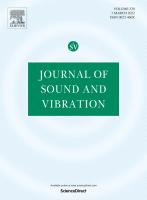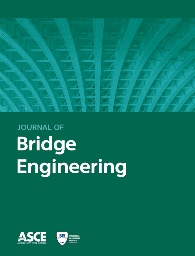Adaptive Bridge Structures
This work introduces innovative methods for retrofitting aging bridges and designing new ones equipped with active components, aiming to increase span, reduce material use and associated emissions, and extend service life.
Europe’s aging bridge infrastructure presents a significant societal challenge, with 40-50% of bridges exceeding 50 years of service life and facing increased traffic loads. An analysis of failure modes for steel box-girder, truss, tied-arch, cable-stayed, and suspension bridges reveals substantial potential to extend service life through active retrofitting. Numerical simulations on case studies, including the Toutle River Bridge (96 m span) and Fleher Bridge (368 m span), illustrate the benefits of active control using linear actuators integrated into hanger cables and stays. Fatigue analysis via rainflow counting and time history simulations shows that active control reduces mean stress ranges by 26% on average, keeping them below the fatigue limit. Monte Carlo analysis incorporating traffic statistics predicts that active control could extend bridge service life beyond 75 years by mitigating stress responses below the Constant Amplitude Fatigue Limit (CAFL).
High-speed railway (HSR) bridges pose unique challenges, as maintaining serviceability limits for longer spans often demands significant material additions to enhance stiffness. To address this, an External Adaptive Tensioning (EAT) system has been developed. The EAT system employs under-deck cables manipulated by active struts, allowing linear actuators to tension the cables, generating bending moments that counteract external loads. Parametric studies on steel beam-bridge configurations demonstrate the EAT system’s efficacy, achieving up to 32% mass savings and 25% CO₂ reductions compared to optimized passive designs.
The EAT system also offers promising solutions for prestressed concrete bridges. In a case study of the Petrulla Bridge in Italy, EAT effectively compensated for deflection caused by an 81% reduction in prestress force due to corrosion, reducing 61% of the moment response in the Ultimate Limit State (ULS) and extending the service life by 12 years.
This research demonstrates that adaptive systems can significantly improve material efficiency, sustainability, and durability in bridge design and retrofitting, addressing both current challenges and future infrastructure needs.
Acknowledgments
The following institutions have provided core funding to support this work: the Institute for Lightweight Structures and Conceptual Design (ILEK) of the University of Stuttgart; the German Research Foundation (DFG) through the Collaborative Research Center CRC1244 “Adaptive Skins and Structures for the Built Environment of Tomorrow” (Grant No. 279064222)
Publications
Related Projects
Adaptive Floor Systems
Minimum Energy Adaptive Structures
Structural Adaptation through Large Shape Changes








